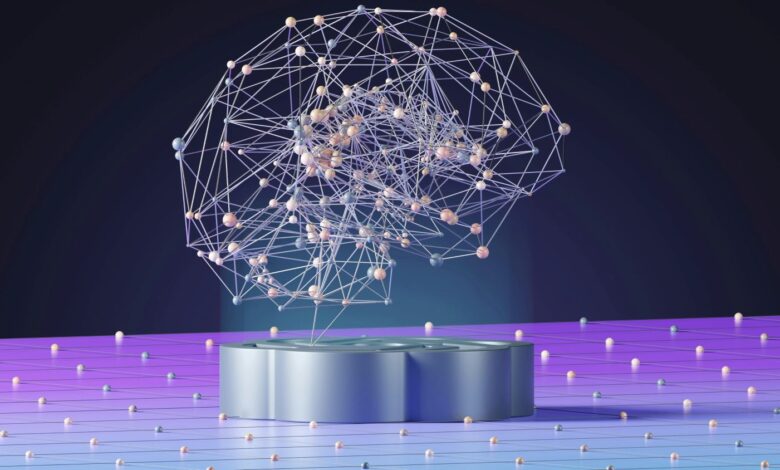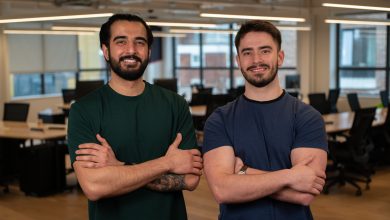
Artificial intelligence is no longer a futuristic concept; it is a mainstream tool helping to reshape the way in which we live and work. Organisations across a variety of industries recognise the imperative to integrate AI into their operations, knowing that failing to do so could leave them behind in an increasingly competitive market. The UK government echoes this urgency through initiatives like the AI Action Plan, aiming to position the nation as a global leader in the technology sector.
The widespread adoption of AI does not come without challenges, with trust emerging as a major barrier. Public opinion is divided – while around 40% of UK adults expect AI to have a positive impact, 30% fear negative consequences. This scepticism extends into the workplace, where concerns over automation-driven job displacement persist. Studies suggest that a significant percentage of jobs could be automated, raising questions about the future of work and the role of human employees in an AI-powered economy.
According to a Gartner report, by 2028, AI will autonomously handle 15% of routine work decisions. While this fuels fears of job losses, the government emphasises balancing innovation with safety, aiming to harness AI’s potential while safeguarding the workforce.
So, as industries continue to integrate AI, the debate over its long-term effects on jobs goes on.
From predictions to autonomous intelligence
Before we talk about the AI triad of today, we should cover one of the earliest forms of AI to exist to truly understand how AI is evolving – ELIZA 1960.
ELIZA was one of the first natural language processing programs designed to mimic human conversation. Though its responses were scripted and lacked genuine understanding, ELIZA captivated users and demonstrated the potential for human-computer interaction. This early experimentation with automation set the stage for today’s AI advancements, where machines are no longer just responding to input but making autonomous decisions.
From these early experiments with ELIZA, AI has evolved dramatically, giving rise to three key patterns that define its modern capabilities: predictive AI, generative AI, and agentic AI. Among these, agentic AI stands out as the most advanced. As we know, unlike predictive AI, which analyses data to forecast trends, or generative AI, which creates new content, agentic AI goes beyond by making autonomous decisions without human intervention.
No-Code: empowering employees in the AI era
As AI adoption becomes essential for businesses of all sizes, a key challenge remains: how can organisations implement AI effectively, if people don’t trust it enough to embrace adoption?
The answer lies in finding opportunities to demonstrate simple ways in which AI can enhance our working lives without fundamentally changing or replacing jobs. This is where a technology called no-code is helping companies to quickly and easily deploy AI.
No-code offers employees, regardless of their technical background, the ability to build applications and workflows using visual interfaces and drag-and-drop tools. The global no-code market is expected to reach $187 billion by 2030, up from $10.3 billion in 2019, reflecting its growing significance in workplaces.
Now, no-code platforms are being combined with AI, meaning applications and workflows can be built and automated at an unprecedented speed. Meanwhile employees across the company using these tools are getting hands-on experience of using AI and the tangible benefits it can deliver to their work.
Transforming business operations
The intersection of AI and no-code is reshaping industries, helping companies stay competitive in the age of automation. Paired with no-code, AI enables the workforce by automating repetitive tasks and freeing employees to focus on higher-value work.
For example, AI-powered chatbots, developed through no-code platforms, handle customer inquiries, reducing response times and allowing support teams to focus on complex interactions. Chatbots reduce inquiries by 70% across calls, chats and emails while resolving 90% of customer queries in fewer than 11 messages.
In marketing, AI-driven analytics help personalise customer experiences and refine campaigns in real time. Businesses use no-code AI tools to analyse vast amounts of customer data, segment audiences, and tailor messaging in real time. AI-powered recommendation engines, such as those used by streaming services and online retailers, enhance user experiences by suggesting relevant products or content, ultimately driving higher engagement and revenue.
The key with technologies like no-code is that employees can tailor AI-driven tools to their specific needs, ensuring that automation and analytics align with their business goals. Rather than replacing workers, AI-powered no-code equips them with the tools to become problem-solvers and innovators.
Human-AI collaboration is the future
AI is not replacing the workforce: it is reshaping it. In fact, research shows AI is more of a job creator than a job destroyer. A 2024 study found that 91% of companies using or planning to use AI will hire new employees in 2025, and 96% say candidates with AI skills will have a competitive edge.
In the immediate future, the most successful workplaces will be those that balance automation with human creativity and critical thinking. While AI combined with technologies like no-code unlock unprecedented efficiency, human oversight remains essential. Rather than being defined solely by technology, the future of work will be shaped by how businesses use these tools to support their workforce and drive meaningful innovation.
Companies that embrace the age of automation will unlock new possibilities, redefining job roles rather than eliminating them. AI is shifting the nature of work, allowing employees to focus on strategic, creative, and high-value tasks while automation handles repetitive processes. This transformation fosters a more agile and empowered workforce, where technology acts as an enabler rather than a replacement.
The key to successfully implementing AI and avoiding being left behind is not in fearing the technology but – as with any emerging technology – in using its strengths to enhance human potential. AI is not here to take over – it’s here to collaborate and play a part in the continuous redefinition of the future of work.





